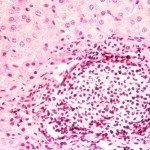About
Respiratory viruses are the cause of major epidemics worldwide. In particular, Influenza viruses, respiratory syncytial viruses (RSV), and more recently SARS-CoV-2, have been leading causes of hospitalizations for acute respiratory infections.
The evolution of these epidemics is traditionally monitored using classical epidemiological modelling, that relies on analysing the prevalence of cases, and is based on models such as SEIR (susceptible-Exposed-Infectious-Recovered).
Over the past two decades, the increasing sequencing of viral samples from infected individuals has allowed the development of methods aimed at monitoring the evolution and transmission dynamics of infectious diseases using genomic data as a foundation. Since then, phylodynamic models have been developed in different frameworks to estimate key epidemiological parameters, such as the reproduction number, from sequence data.
To better monitor virulence and transmission, and characterize viral evolution, the National Reference Centers for respiratory viruses (NRCs, Hospices Civils de Lyon and Institut Pasteur Paris) have developed a collaborative project with the two main networks of community laboratories covering mainland France, Cerballiance and Biogroup (RELAB Laboratories, >1500 laboratories). This consortium has been producing a very large and unbiased sequence dataset from individuals undergoing a virological PCR test for a suspicion of ARI (RSV, Influenza, SARS-CoV-2).
In this project, we apply phylodynamic methods on the RELAB dataset to characterize the epidemics (transmissions over time, lineages, etc.).



